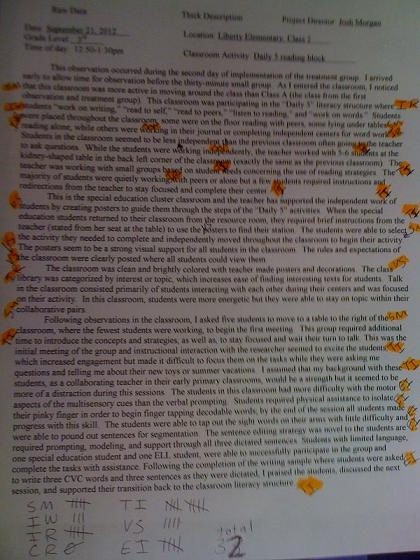Each student completed the work sample below during the sessions to support the multisensory strategies for writing and editing sentences that are the focus of the research project. The work sample provides experience initially with segmenting and writing words that illustrating the current phonetic pattern or phoneme. Following the writing of the segmented sounds, the students rewrite the words independently after they check their work with the teacher model of the word. This builds student editing at the word level. The second step of the strategy sheet requires students to “pound out” words to segment sentences with their fists on the table. Students repeat the sentence while touching the individual lines for each word in the sentence – supporting sentence segmentation. The sentence is written as a group while “tapping out” phonetic words with their fingers and tapping on their arms to segment the letter names of sight words. Each of these strategies has a strong, neurological research basis. The third piece of the strategy sheet requires that following the writing of each sentence, the students use the “COPS” strategy, along with visuals, to edit their sentence, first as a group, then independently.
Students required additional support and live scoring of the sheets to support their independent use of the editing and writing strategies. At the end of the intervention, students were strong in writing sentences but seemed to get too excited about the reinforcement following the group and failed to complete their edits before marking their completion at the bottom of the sheet.
During the sentence-writing piece, the segmented sentence is written together and checked together. Following this choral process, students rewrite the sentence and check their work independently to generalize the strategy. This step proved difficult for some students.





